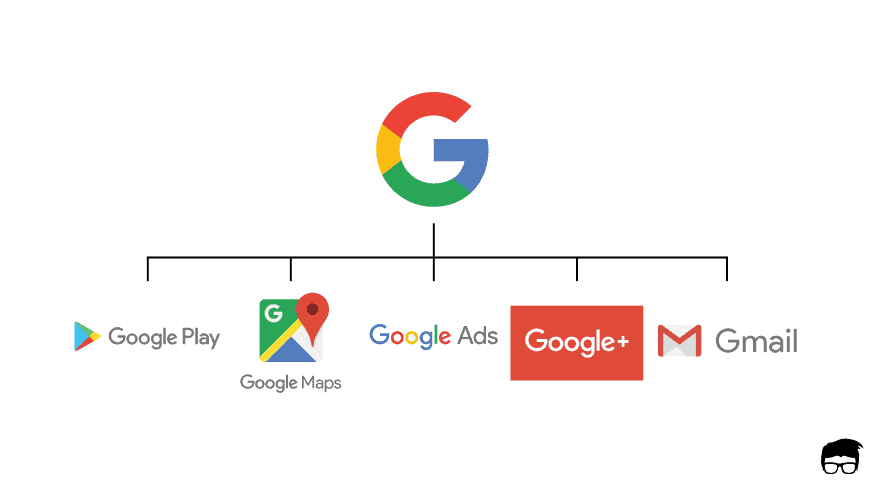The current marketing scenario is buzzing with brands and their branding activities. From businesses, NGOs, and governments to religious bodies, leaders, and their political parties – everyone has become brands that are performing to better position themselves in different areas of society.
As organizations grow, they aspire to appeal to different audiences through different product, and services, these commodities are either introduced or acquired through company acquisitions. While branching out is profitable for business, it adds an extra layer of complexity to your brand identity that perplexes your customer, making your brand seem ‘complicated’.
Although it is difficult to gaze at the confusion from the inside, it is sure to impact your brand equity in the long run. So, how do we manage the perception and gain better control over the brand? That’s where brand architecture comes in order.
An intuitive and intelligently designed brand framework can assist you to pair your products with the right target audiences, define your relationship with each sub-brand, help you with cross-promotion and gain control over the audience’s perception of your brand.
In this article, we will discuss in detail brand architecture, its importance, and its benefits in solidifying a brand architecture. Finally, we will discuss how Vowels, a neutral third-party can bring a ton of value to your brand consolidation.
So, What Is Brand Architecture & Why Should I Care About It?
Brand architecture is an organized structure of brands in a company. It is a guide that helps define the relationship of a parent company with its various sub-brands, and subsidiaries. In a nutshell, brand architecture is a road map for defining brand identities, product development, and visual identity.
There is a general misconception that brand architecture is valid for large organizations but it couldn’t be further from the truth. Small companies and startups can witness considerable improvements in the performance of the products/services they are offering.
Here are some of the other major benefits brand architecture provides:
- Defined Set Of Audience & Their Needs
- Solid Brand Messaging & Positioning
- Reduces Marketing Costs
- Boost Confidence Among Stakeholders
- Protect Brand Equity

1. Defined Set Of Audience & Their Needs
Brand architecture helps segment your audience according to their needs. In this way, a specific brand can tailor it’s messaging and give the customer exactly what they are looking for.
2. Solid Brand Messaging & Positioning
Nothing hurts a brand more than a muddled brand positioning. With brand architecture, you can gain greater clarity in your position in the market and the messaging to dial up the sales.
3. Reduces Marketing Costs
When the structure is intelligently and intuitively designed, you increase your chances of effective cross-promotion and save a lot of marketing budget and effort.
4. Boost Confidence Among Stakeholders
A great brand architecture helps the brands capture the attention of their specific marketplace, promoting sales and brand awareness. This structure of growth and innovation boosts the confidence of existing stakeholders and attracts potential investors.
5. Protect Brand Equity
Brand architecture helps a company define its breadth and depth. Not only does it provide clarity around the products and services you are offering, but it also helps you gaze at the perception of the consumers about it. This information is enough to influence customers’ behaviour and maximize the transfer of brand equity between the parent and its sub-brands.
What Are The Types Of Brand Architecture That Exists?
There are three main types of brand architecture:

1. House of Brands

House of brands is a slightly more flexible brand architecture strategy where the parent brand owns and manages various sub-brands, each of which has a unique brand identity.
Under this architecture, the sub-brands are not linked through visual and verbal identity rather they address distinct market segmentation needs, with individual marketing and communication strategies.
2. Endorsed Brands

In this architecture, unique and distinct sub-brands are linked together by an endorsing parent brand. To put it simply, a parent brand is an umbrella that hosts a variety of sub-brands with its own brand identity.
The best example to understand this structure is the Marvel Universe. They host a variety of series and movies like Captain America, Iron Man, and Spider-Man but they got more traction because they were associated with the Marvel Universe.
3. Branded House

Branded house is the common type of brand extension where the parent company is closely associated with its sub-brands. The fundamental aim of the branded house is to gain maximum visibility for the master brand. To gain maximum use out of its subsidiaries, the parent brand aligns itself with them through logo, packaging, and brand communication.
How Can You Create Your Own Brand Architecture?

1. Research
The single most important tool in creating a sound brand architecture strategy is to do your research. It is important to know your customers, their associations, and brand loyalties.
The research data will help you determine which brand architecture type will best support your business strategy. The qualitative and quantitative research analysis will give you an insight into your strengths and weaknesses along with your competition.
2. Clarity
Be clear about your organizational structure, business vision, and ambition. A brand architecture will demonstrate how your parent brand and their sub-brands communicate and support each other. Therefore, before determining whether a strategy will benefit or harm your corporate identity, have a clear idea of the brand’s perceived value in the eyes of customers and investors.
3. Strategy
How closely do you want to associate your sub-brands with your parent brand? To what extent should the associated brands cross-promote each other? Should they even interact or remain independent?
These are some of the questions, a company answers while determining its ideal brand architecture type. In the strategy phase, a company assesses the value of the relationship between the parent and its subsidiaries. It determines if the relationship can provide additional brand equity to support the main business. Since the portfolio brand architecture is the most expensive investment, the company also determines the most cost-efficient structure to tackle it.
4. Plan A Timeline
Once you have narrowed down your ideal brand architecture type crafted to your needs, it’s time to plan and introduce your timeline. If you are planning to implement the master brand structure then you decide on the homogeneous visual identity to pull everything together. If your ideal structure is having distinct sub-brands then you need to craft a unique identity system to support that architecture.
Conclusion
While creating a successful architecture, it is important to understand that it doesn’t just happen. It requires careful thought, meticulous planning, and most importantly a neutral third-party perspective. Brand architecture when gone wrong risks brand dilution, or at the least, not optimizing the brand assets to their maximum potential.
If you are confused and looking for experts to assist you in creating your unique brand architecture, Vowels is here at your service.






